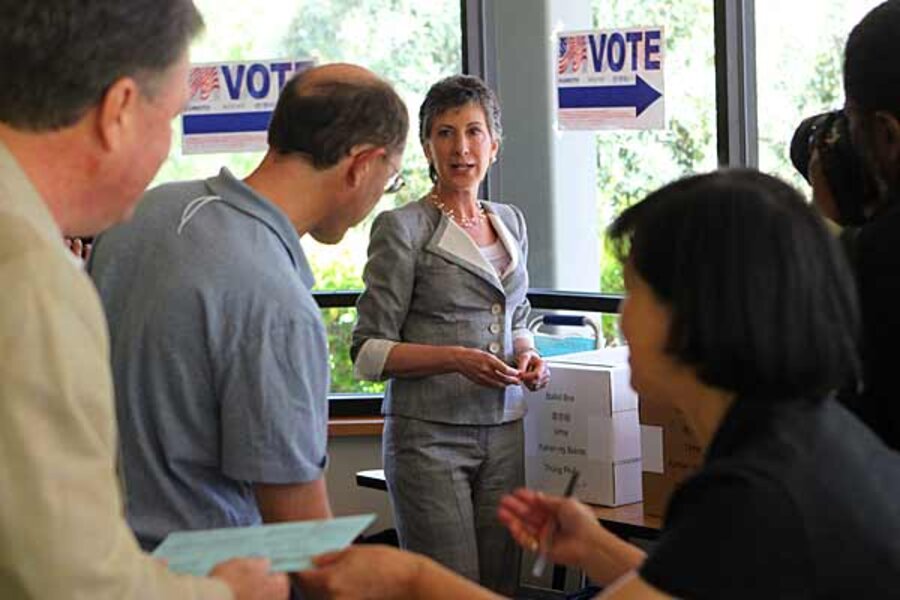Unsure how to vote in California primary election, many turn to Twitter
Loading...
| Studio City, Calif.
The voter information pamphlet at the Studio City Recreation polling place for Tuesday’s California primary election is 80 pages long, and as poll worker Angelica Torres says with a laugh, “it’s just too big, too much.”
Voters headed to polls in 12 states Tuesday with a fall election just around the corner. As ballots get ever-more-complicated, packed with a growing number of sometimes byzantine propositions, not to mention complex and controversial candidate positions, the question arises: how are people actually deciding which button to press, chad to poke, or lever to pull?
Those traditional tools of past political campaigns such as TV or radio ads are still a mainstay of political consultants. But increasingly, say both the experts and the voters themselves, the politically interested are turning to sources of information that deliver a personal touch, whether it is a spouse, a union rep, or – for the younger generations – a tweet or online status update.
“As traditional media have gotten more venomous and partisan, people are looking for sources that deliver credibility,” says Rochester Institute of Technology media expert Andrea Hickerson. “If it has the added benefit of feeling as if it comes from a trusted friend or contact, as social media does, it is that much more powerful.”
For the analog crowd, trusted sources of information are becoming more important than ever, says rec center worker Judy West, who says she doesn’t go on the Internet for information. She talks to her local union rep, and, she says, “frankly, he makes it easy for us. Otherwise, it’s too hard to figure all that information out.”
A nearby clutch of mothers with young children agrees. Says 35 year-old psychotherapist Marissa, “my husband reads it all and he tells me what the issues are.”
But perhaps the most closely-watched avenues of personal connection are the various forms of social media. After President Obama showed the power of a million-plus Facebook “friends” in the 2008 election, “this election is a bellwether for the future of social media and politics,” says Fordham University social media expert Paul Levinson, author of “New New Media.”
The under-35 crowd is turning to social networks – sites such as Facebook, Twitter and YouTube – for the personal touch it seeks, says twenty-something Alex Huf.
The key is a sense of connection, says the media entrepreneur who has been following California gubernatorial candidate Jerry Brown on Facebook since the former governor announced his candidacy. “Brown only had around 500 to 1,000 friends on his site when he started, but I brought my 400 or so friends and recommended they friend him, and that way I could get easily involved in his campaign and have an impact without a lot of effort,” says Mr. Huf.
Twitter is less comprehensive, he says, but it provides what he calls the most important piece of political information: a personal connection. “All my friends like to feel as if they are having personal contact with a candidate and the issues,” he says. And even though he and his cohorts recognize that most of the candidates' social network identities are run by professionals, “it still feels as if we are in actual contact with the candidate and that makes a big difference.”
Expect the trend to grow, says Barbara O’Connor, director of the Institute for the Study of Politics and Media at Sacramento State University. She says that propositions will continue to proliferate, and campaigns get more and more complicated. Whatever can cut through that clutter with a personalized communication, she says, is what will deliver a message to the voters.
Related:





